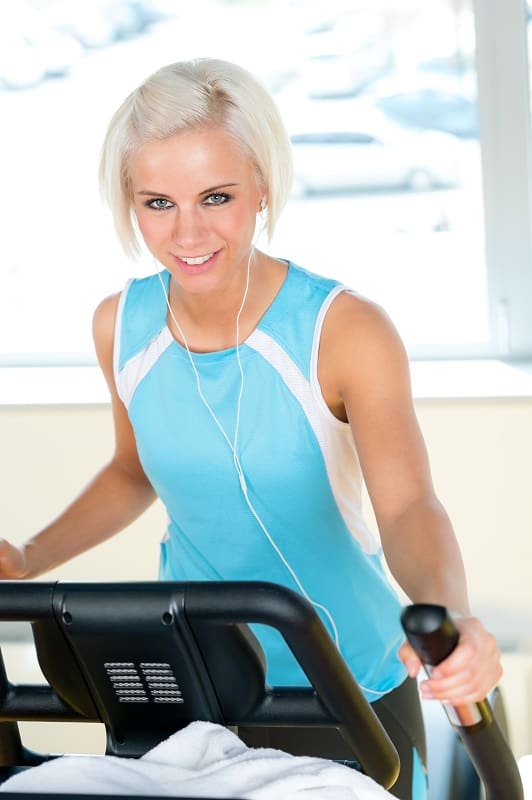Runner’s knee is a cause of frustration and anxiety for anyone who suffers from it. Use the 8 points in this article to find out if the elliptical will help or hinder your runner’s knee.
Seek professional advice before jumping on an elliptical if you have runner’s knee.
Your running shoes can influence your runner’s knee.
Table of Contents
Runner’s Knee Persists After Switch From Running to Elliptical
In some cases, reducing the elliptical time may help your knees start to recover. However, if the problem persists, it may be necessary to stop entirely and seek help from a professional.
Start with strength to build the muscles that support the knees. These can include squats, lunches, Romanian deadlifts, glute bridges, and the list goes on. Seek the help of a professional strength and conditioning coach for their opinion.
Can I use an elliptical if I have runner’s knee?
If symptoms are mild, the elliptical can be in place of running. It’s a low-impact, reduced range of motion form of exercise that can be used to maintain strength, mobility, and cardiovascular fitness.
Runner’s knee can become stiff with long periods of inactivity. The elliptical is one of the better forms of exercise that can be done to keep a range of motion in the knee without jeopardizing knee health.
If your runner’s knee is in the past and you’ve received all clear from your doctor. The elliptical is an excellent low-impact option when planning your return to running. It’s a lower impact exercise than the treadmill and can help strengthen the muscles that support the knees.
Does the elliptical help prevent runner’s knees?
The elliptical can help prevent runner’s knee by strengthening the supportive muscles around the knee and helping maintain knee alignment in a controlled environment. In addition, its low-impact steady range of motion action mimics the running action while being kinder to your knees.
For the new runner, runner’s knee can be a symptom of running too many miles too soon. The onset of runner’s knee can indicate a wear and tear issue for the veteran runner. In both cases, it’s an indication that some rest is required and cross-training integrated into your running program.
Recovery runs are a popular method for flushing the legs of lactate and keeping stiff legs moving. Switching out recovery runs for the elliptical will give you the same lactate and mobility benefits while reducing the load on your knees.
How soon can I use an elliptical while recovering from runner’s knee?
Suppose you can walk for 10 to 15 minutes without experiencing any runner’s knee symptoms. After that, you are probably ready to try the elliptical.
Start slow with light resistance without popping up and down for a short period. Try 5 minutes the first time and give yourself a day to recover. If symptoms do not return, try again, not increasing the time by more than 10%, and build from there.
However, after using the elliptical, you experience light discomfort. Try treating it with stretches, ice, and Ibuprofen if the pain doesn’t go away quickly after these treatments. Then, stop using the elliptical and seek professional advice.
Will the elliptical speed up my recovery from the runner’s knee?
Building the knee supporting muscles will help speed up recovery from runner’s knee. But, of course, that’s assuming you can develop and be consistent in using the elliptical without experiencing any symptoms.
Using an elliptical will help your recovery from runner’s knee, assuming no symptoms return. However, how quickly will many factors influence you, including your age, running history, injury history, and genetics.
Are ellipticals hard on the knees?
The elliptical is a low-impact closed-chain form of exercise. It’s less harsh on the knees than spending time on a treadmill or running on roads or trails.
There are a couple of things to consider before jumping onto the elliptical. First, be conscious of your foot position on the machine. Make sure your feet and knees are aligned to avoid lateral movement.
Not all ellipticals have the same motion. If there are two types of ellipticals in your gym, be sure to test them both to see if there’s an action that works better for you.
Why does elliptical hurt my knees?
It’s not the elliptical hurting your knees; it’s the fact that your knees aren’t ready for the load you’re placing on them.
An elliptical is a low-impact form of exercise; however, the load on the knees is not entirely removed. In addition, alignment between the feet, knees, and hips can cause problems.
It could be caused by the way you’re using the machine. If you’re bouncing up and down using a full range of motion, this is likely too much too soon for your knees. Instead, try a conservative action keeping your head and shoulders stable last using your quads and hips to move the pedals.
Is the elliptical better than walking for runner’s knee?
Elliptical and walking are both excellent forms of exercise to help you recover from runner’s knee. Did vantage of walking is that you don’t have to wait for the gyms to open to step outside your front door.
The recovery process from runner’s knee will be different for everyone. Everyone will recover at different rates, and everyone’s knees will respond to training stimuli differently.
Both activities place little stress on the knees compared to running. Ideally, both activities can be used during the rehabilitation process. Integrating a range of activities while recovering from runner’s knee will provide multiple sources of stimulus.
If one causes discomfort or pain in the knee, remove that activity and focus on the other.
Should I do elliptical every day if I have runner’s knee?
Initially no. Using the elliptical while recovering from runner’s knee is a process of testing and evaluation. Each initial session should be followed by a rest period (for example, a day) before the next attempted session.
Any discomfort after any session on the elliptical followed by any pain should be closely investigated and afforded an appropriate response.

Frequently Asked Questions
Does runner’s knee ever go away?

It is possible to recover entirely from runner’s knee. However, some people’s symptoms will be worse than others. These will require more help and attention.
If when your runner’s knee returns, immediately seek help from a professional.
Is Elliptical Trainer a Cardio Substitute for Running?

An elliptical is a good form of cardiovascular exercise. Low impact, low risk and can be adjusted for a higher or lower load on your body depending on where you are in your training cycle.
Most runners prefer to run outside with all the benefits that that will bring. However, the elliptical is an excellent substitute if running outside is not possible.
What is the fastest way to fix a runner’s knee?

Rest is the most critical initial factor. If the pain is acute, seek the help of a professional. Ice can be used to reduce swelling, along with Ibuprofen.
If this isn’t the first time you’ve had runners knee what action have you previously taken? Consider what further action should be taken.
Be proactive and consider every action carefully.
What are the benefits of using an elliptical for runners?

The elliptical allows a runner to increase aerobic exercise time without adding stress and strain to the posterior chain.
Recovery runs can be replaced with time on the elliptical and still benefit from a recovery run without adding stress and strain on the muscular skeletal system.
How long does it take to see results from an elliptical?

Improvements can be expected within one to two months if progress is consistent and pain-free.
Stationary bike vs elliptical for knees?

Both the elliptical and the stationary bike are exemplary forms of cardiovascular exercise. Moreover, both can be set up in such a way as to not impact joints too much by reducing the load during training.
What exercise can I do with runner’s knee?

If, for some terrible reason, you were unable to run in the open air, the elliptical is a great low-impact alternative. It’s easy on the joints, and after a long or hard session, it’s a great way to flush the lactic from your muscles.
However, unless you’re injured or heading to the gym for a strength session, most runners would prefer running outside for a recovery run to get the same benefits.
Does running downhill cause runner’s knee?

Your leg extends further when running downhill. It may be only a tiny amount if the hill is not too steep, but that’s enough to put extra strain on your knees and posttrial chain. The steeper the decline, the more exaggerated this becomes.
When preparing for a race with a lot of decent, it should be factored into your training.
Can the elliptical cause stress fracture?

If done to excess, any form of training risks causing a stress fracture. However, the elliptical’s low-impact closed chain nature is relatively safe compared to going for a hard run.
Is elliptical Good for patellofemoral syndrome?

The elliptical can be used during the rehab phase of patellofemoral syndrome. It is a low-impact closed-chain form of exercise that can be configured to place a relatively low load on joints compared to running.


